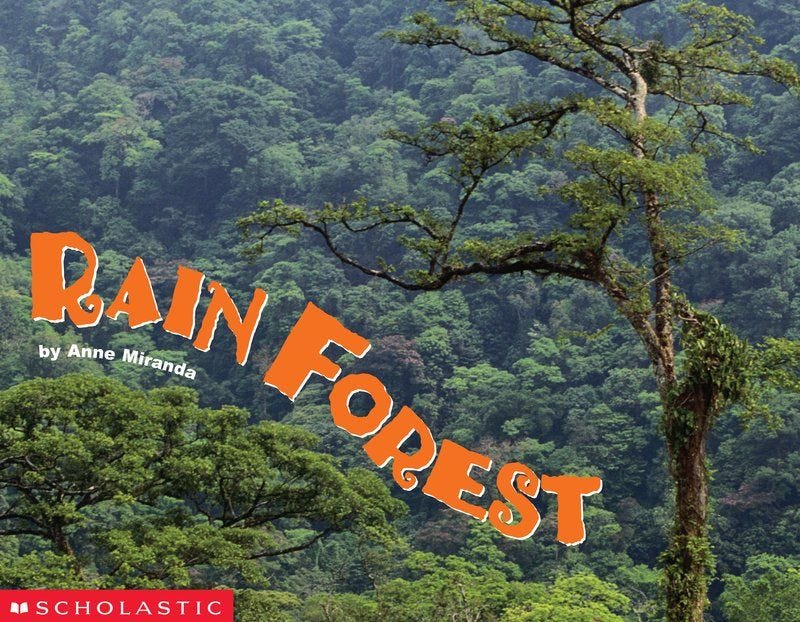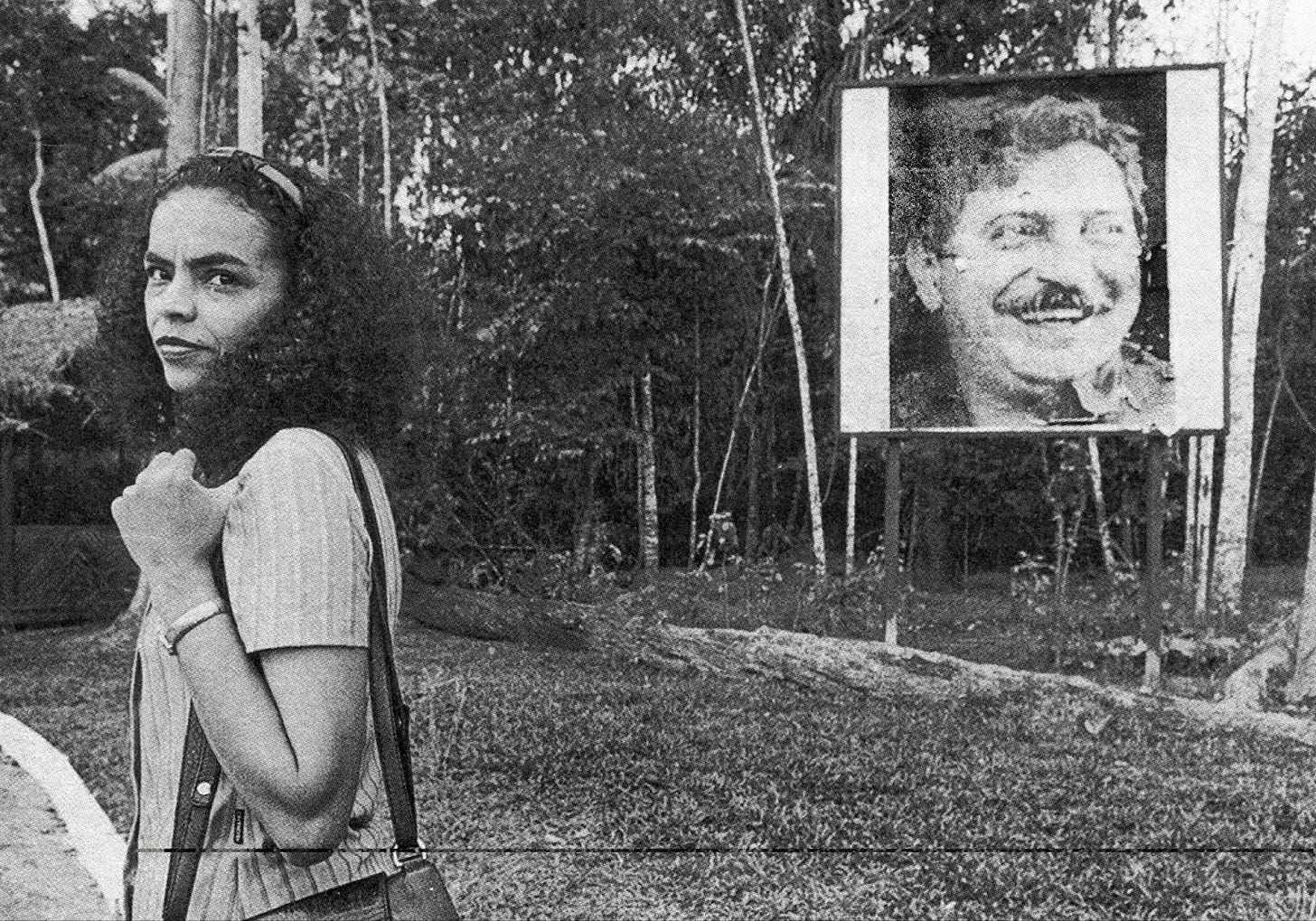Aesthetic Planet
One of the things that I’ve appreciated about living in Ireland for the past 3 years is being able to escape the political bubble of the United States. Not in the sense that Ireland’s government sometimes actually functions like a democracy, though that is refreshing, but that US perspectives on politics and culture are overwhelmingly insular and self-referential in a way that doesn’t seem to happen in other places. It seems like every couple of weeks I come across some new political history or a novel perspective that reveals some unexamined assumption I inherited from growing up in a nation that considers itself to be the center of the known universe.
And so today I want to talk about perceptions of the Amazon rainforest and its conservation. The Amazon loomed large in the childhoods of those of us who grew up in the 90s and the millennium. From DK Eyewitness and Scholastic childrens’ books, to the Nature Company and the Rainforest Cafe, the Amazon was one of the touchpoints of the recently-codified Utopian Scholastic aesthetic.
From Dark Academia to Cluttercore, the power of the “aesthetics” bandied about on social media comes from the fact that they are ultimately visual signifiers of some underlying worldview, one that can often bring comfort and escapism from the everyday. Utopian Scholastic’s visual story focuses on ancient Egyptian history and pristine global ecosystems like oceans and rainforests as mediated through nonfiction childrens’ literature and early internet computer programs and computer graphics. Its underlying worldview is the power of education and computer technology to unite humanity around our shared history and planetary system.

Certified American
Rainforests, in particular the Amazon, were a major source of this. The Amazon is conceived of as “the lungs of the world,” a global source of ecological diversity and technological advancement through medicine, and being a globally important entity. It belongs to and is the responsibility of all of us. The example of medicine is so indicative of just how ubiquitous these ideas of the Amazon are. I have no idea how Amazonian species are surveyed and used in the medical and biotech industries, but it has been drilled into me that that’s one of the reasons the Amazon is important and I bet if you asked any millennial they would tell you the same thing.
But if the rainforests of Central and South America are all of our responsibility, how are we to manage and, more importantly, protect them? My US-centric view of this has always been that NGOs are our best ally in this global environmental governance problem. The Rainforest Action Network, Rainforest Trust, and my one-time employer Rainforest Alliance are all based in the US and all founded in the late 80s. All three companies claim to work closely with “local communities” and they all need your [monetary] help to achieve their mission.
These NGOs were also all founded with the intention to liberate environmentalism from its hippy connotations (more on this from Dan Nosowitz’s article) and they did this by focusing on business and capital as solutions: The Action Network targets corporate board-rooms via protest and lobbying, the Trust purchases land to conserve it, and the Alliance certifies consumer products using “sustainable” cultivation methods. In short, if the world’s rainforests belong to all of us, then the way to preserve them is through the one thing we all belong to: the market.
Amazonian Roots
This was the understanding of Amazonian conservation I grew up with, and to some extent have still held onto into adulthood – it’s a flawed system but is our best hope at the moment. That is, until my fragile American worldview was cracked open a few weeks ago in a seminar by Brazilian environmental historian José Augusto Pádua. Pádua explained that Amazonian deforestation is largely a 20th century problem. The Amazon and the indigenous people calling it home had largely been left unregarded at the expense of the almost complete destruction of Brazil’s Atlantic Forest. The “decades of destruction” beginning in the 1970s began largely as an internal colonization effort by the Brazilian government, motivated by the fear that “undeveloped” areas with native populations who didn’t identify as Brazilians could easily be claimed by another nation—namely, the United States.
The forces that established Brazil’s military dictatorship and pushed it to encroach upon the Amazon came from the United States, and the most effective efforts to conserve the forest came not from US NGOs, but Brazilian workers. Chico Mendes was a leader in the Rubber Tappers Union and the Rural Workers’ Union from the 1970s until his assassination in 1988. Rubber tapping has long been an industry and a livelihood in Brazil and has a unique relationship with the forest. Rubber trees require diverse forest cover to grow well and tapping involves scoring the trunk of a living tree to collect its latex sap. Since trees only begin to yield latex at five or six and can continue to be harvested for twenty years, rubber workers have a vested interest in the conservation of the rainforest ecosystem that allows rubber trees to thrive.
In his talk, José Augusto Pádua shared that in one conversation he had with Mendes, the labor leader told him “at first I thought I was fighting for the rubber trees, then I thought I was fighting for the forest, and then I realized I was fighting for the planet.” The movement of rural workers in Brazil fought for human livelihoods and forest conservation at the same time because they saw them as the same issue: the worker relies on the ecosystem and the ecosystem on the worker. This worldview has held weight in the post-dictatorship government, with the ascendance of the workers party and folks like Marina Silva, a prominent rural union leader elected to the senate in 1994 who is currently Brazil’s Minister of the Environment. Importantly, it has worked: compared to the Rainforest Trust’s 20 million acre holdings, Brazil has been able to put over 170 million acres of forest into protected areas (though the funding of this program by the World Bank is still worthy of criticism).

Marina Silva in the Amazon photographed alongside a poster of Chico Mendes
World Rainforest Café
Leaving the responsibility for environmental stewardship to organized labor and democratic governance is not something Americans, or really any society in the Global North, can easily accept. We understand labor unions and democratic citizens to vote selfishly, so we reach for something bigger than and outside of ourselves to hold us accountable. We reach for the market. How else to explain the growing appetite at recent COP meetings to establish a carbon credit market that would pay countries like Brazil for afforestation efforts so that countries like the United States can keep polluting?
But the globalization and commodification of plants, animals, and ecosystems as “resources” to be “traded” and “credited” [and accumulated] by the market is horrible because it is a tool for humans to pretend that humans aren’t making the decisions. If we give industrial power to workers (even fossil workers) and governing power to citizens (even citizens of petrostates), isn’t it plausible to think they, we, would use that power to dismantle the systems making our labor unsustainable and our governments unjust? If we take the Utopian Scholastic worldview seriously, that our education about our shared planet and history binds us together, what action does that lead us to?